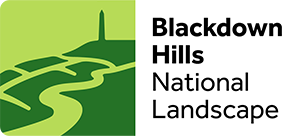Castle Neroche
2,600 years ago Castle Neroche was the site of an impressive Iron Age hillfort, used as a refuge for the surrounding farming communities during attacks from neighbouring tribes.
In the 11th century, William the Conqueror’s half brother Robert, Count of Mortain, built a Motte and Bailey Castle here on this strategically useful hill-top location.
The name Neroche is thought to be derived from the Old English nierra and rechich or rachich, meaning the ‘camp where hunting dogs were kept’.
There are spectacular views over the vale of Taunton towards the Quantock Hills and Exmoor and, on a clear day, you can see as far as the Mendip Hills and Glastonbury Tor.
The terrain in this woodland is very steep in parts and it can be wet, muddy, stony and uneven underfoot. If you’re not very sure-footed, we’d advise staying close to the parking area. You can still enjoy an atmospheric corridor of trees and spectacular views without having to walk very far at all.
There are display boards in the car park, giving information about the history and the wildlife at Castle Neroche and showing viewpoints and walking routes through the woodland.
Note that the car park has a height restrictor in place, so is not suitable for vans or minibuses.
Castle Neroche is managed by the Forestry England.
Activities
Download our hillforts activity sheet [pdf] suitable for adults and children.
Children’s activity video: Explore and Create – Patterns in Nature at Castle Neroche
Coldharbour Mill
The Mill was originally owned by world-renowned textile producers Fox Brothers who transformed fleece into yarn, cloth and textiles. It was located in an area which had plenty of resources, with an ample supply of sheep, and therefore fleeces, and easy access to the River Culm for a continuous supply of water.
Originally the mill was powered by waterwheel, with a new one installed in 1821. Then, in 1865, steam engines were installed to power the factory’s machines and keep up with production demands. The steam-powered equipment is still in working order and is fired up several times a year at the Mill’s special ‘steam up’ days.
The Mill is open to the public all year round. Closed Mondays except bank holidays 9.30am – 4.30pm.
Culmstock Beacon
High on the southwest point of Blackdown Common is Culmstock Beacon. It is one of a chain of Elizabethan beacons used for lighting fires to warn of advancing enemies, for example, The Spanish Armada.
The beehive-shaped structure was built of flint. It was rebuilt in 1870 after the collapse of the earlier one.
Culmstock Beacon is a wildlife haven with stunning views, particularly in the late summer when the bell-heather is in bloom. Access via public bridleway.
Activities
Download our hillforts activity sheet [pdf] suitable for adults and children.
Children’s activity video: Explore and Create – Framing the Landscape at Culmstock Beacon
Dumpdon Hillfort
Dumpdon Hillfort, managed by the National Trust, sits on one of the largest and most striking hills in the beautiful Otter Valley. The climb up the hill is well worth the effort. You’ll be rewarded with breathtaking panoramas of the surrounding area and a wide grassy area – great for picnics.
Dumpton and the nearby beech woodland has long maintained an aura of mystery. Legend has it that there is a tunnel from Marwood House to the Dumpdon Hillfort’s summit!
Long horn cattle are often grazed on the hillside. They help manage the land and increase biodiversity. Don’t be put off by their large horns – they’re not aggressive animals – but do keep your dog on a lead nevertheless.
Start the climb from one of the two small car parks (please be mindful of limited space for others when you park) and then wend your way up the slope to the top.
Why not take a yomp up there with your family? It’s a fabulous place for a little challenge!
There are only a few parking spaces at this site, so please park your vehicle with this in mind.
Love Hillforts?
Other hillforts are available! A few miles west, Hembury Hillfort has magnificent woodland, earthworks which are simply huge, and spectacular views out to sea.
Walks and rides
A longer walk to Dumpdon takes in the River Otter and some of the nearby countryside.
There is also a cycle route which takes in a visit to Dumpdon Hillfort.
Activities
Download our hillforts activity sheet [pdf] suitable for adults and children.
Dunkeswell Abbey
Close to the Madford River and the village of Dunkeswell are the remains of one of Devon’s major Cistercian monasteries, founded in 1201. While it isn’t a large site, it is a fascinating one. Dunkeswell Abbey ruins are located in a mix of private and Heritage Trust owned land with permissive access, so please be mindful of local residents. The Abbey can also be viewed from the public footpath.
You can discover more about Dunkeswell Abbey in the red telephone box nearby.
Dunkeswell Airfield Heritage Centre
Discover the history of RAF Dunkeswell during the second world war at Dunkeswell Airfield Heritage Centre.
Step back in time and see artefacts and memorabilia, mission narratives and replica uniforms, along with more than 400 photographs and archive film documenting the history of this historic airfield.
While you’re there why not stop for refreshments at The Aviator Coffee Bar & Restaurant and watch the aircraft and parachutists who still use the airfield to this day.
Dunkeswell Airfield was built by George Wimpey & Co and, following its completion in 1943, it was occupied by the USAAF 479th Anti Submarine Squadron and later the US Navy. From March 1944 Dunkeswell was the only US Navy base in Europe.
Visit the Dunkeswell War Stories website to explore our video memory bank and download teaching resources.
Hembury Hillfort
Hembury Hillfort, near Payhembury is the finest prehistoric hillfort in Devon, with massive defensive ramparts. Excavations have revealed Iron Age and Roman occupation.
Hembury Hillfort is an excellent site to introduce children to life in the Iron Age.
Blackdown Hills AONB, in conjunction with Devon’s Historic Environment Team, has produced some resources for Key Stage 1 and 2 primary school children to help teachers, mums, dads and adults with a field trip to Hembury Fort, Payhembury.
Hear about Hembury Fort on BBC Radio 4’s Open Country
Location:
Grid reference: ST111031
Nearest postcode: EX14 3LA
Parking/access:
Car park nearby
Activities
Download our hillforts activity sheet [pdf] suitable for adults and children.
Hemyock Castle
Hemyock Castle is a privately-owned residential site, usually opened to the public on Bank Holiday Mondays between Easter and September. It comprises the remains of a rare, moated, late 14th-century castle surrounding a much older manor house.
During the civil war in England, Hemyock Castle was garrisoned by the Parliamentarians. It was used as a prison and a base for the collection of taxes to fund the Parliamentary forces. The Royalists attacked twice, eventually besieging and capturing the Castle. After Charles II was restored to the throne, Hemyock Castle was destroyed. Subsequently the site evolved to become a farm and, later, a private home.
Although situated in the heart of Hemyock village, the Castle is screened by trees and walls, so surprisingly little can be seen from the road. However, on open days visitors can view the substantial remains of Hemyock Castle’s towers, walls, moat, grounds, and see the interpretation centre, displays of pottery sherds, archaeology and history.
Most of the site is fairly level, so is accessible to wheelchairs and pushchairs. There are no toilets on site but there are public toilets nearby in Hemyock village (including accessible toilets).
See Hemyock Castle website for open days and ticket prices.
Loughwood Meeting House
Now owned by the National Trust, Loughwood is one of the earliest surviving Baptist churches in the UK. Founded in secret during a time of great persecution towards non-conformists, it has remained virtually unchanged since the 18th century.
The history of Loughwood is a story of secrecy and persecution. The first known record of the chapel is in 1653 when a local Baptist parish sought an isolated place to worship. Deliberately nestled into the hillside and surrounded by woodland, it was hoped that, at Loughwood, parishioners would be able to meet in safety. Today, this location makes Loughwood, a wonderful place from which to enjoy the Blackdown Hills AONB.
The building is constructed from colourful stone rubble with large buttresses and a thatched roof. Inside there are simple pine pews and pulpit. A baptismal pool is positioned below the floor. Loughwood is unusual in holding the body of one of its pastors inside the chapel. You can see the wall tablet memorial (an indoor gravestone) to the much-loved Reverend Isaac Hann on the church wall.
Otterhead Lakes
The Otterhead Local Nature Reserve is set around two lakes of the former landscaped gardens of Otterhead House (1817-1952). The estate was developed in Victorian times and by 1890 included over 1700 acres of land.
A range of semi-natural habitats make up the reserve including wet woodland, dry deciduous woodland, grassland, and freshwater streams and ditches.
Dormice, badgers and bat species occur in the woodland. The lakes support bird species including kingfisher, dipper and wagtail
Nesting birds are present, so please keep your dog on a lead at all times.
The entrance to the carpark is just around the corner from Otterhead Church.
There is a circular route around the Reserve which is mostly flat, although there is a gradual slope from the car park down to the lakes and a steep section of a few metres half-way round. Bear in mind that some of the pathways are a little bumpy and, at times, can get quite muddy.
Be aware that some of the permissive paths on the Otterhead Estate have become overgrown during lockdown so please watch out for brambles and other plants that can be a scratch and trip hazard.
Please also be mindful of the wildlife living around the lakes. The adder, the UK’s only venomous snake, lives here. Adders will only bite people or dogs in self defence or if startled, but tread carefully nevertheless. The site is also home to birds that nest on the ground so please avoid disturbing them and keep your dog on a lead.
Upottery Airfield Heritage Centre
RAF Upottery (also known as Smeatharpe) is a former second world war airfield. Active between 1944 and 1948, and was used by the Royal Air Force, the United States Army Air Forces and the United States Navy.
The Upottery Heritage Centre documents the major role this historic airfield played during the D-Day operations of June 1944 and the bravery of the men who flew from Upottery.
During the war RAF Upottery was used primarily as a transport airfield and for antisubmarine patrols. It later returned to use as agricultural land. The airfield was the base of the original ‘Band of Brothers’ who featured in the 2001 television drama series of the same name.
The exhibition is housed within the officers’ complex and original Nissen hut. Exhibits include film of the D-Day landings, local second world war memorabilia, weapons, and even uniforms for children to dress up in.
A unique photographic archive shows pilots being trained and briefed, and there area pictures of the troops literally minutes before they flew to Normandy.
Refreshments are available at the Heritage Centre or the Sidmouth Arms in the nearby village of Upottery.
The Heritage Centre access is all on ground level, with the exception of one room.
Wellington Monument
This striking monument on the edge of the Blackdown Hills Area of Outstanding Beauty, stands as a tribute to the Duke of Wellington and his victory at the Battle of Waterloo.
At 175 feet, Wellington Monument is the tallest three-sided obelisk in the world. The foundation stone was laid in 1817 and it was finally finished in 1853 after more than three decades of building work.
In contrast to other memorials to the Duke, the Wellington Monument has a more informal countryside setting. It can be approached along a path lined with beech hedgerows and is surrounded by a wildlife rich meadow. It’s an ideal place for a picnic or to fly a kite.
The walk from the carpark to the monument is along a level gravel pathway 1.5 miles there and back.
Wolford Chapel and Gardens
A little piece of Canada, right here in the Blackdown Hills!
The Chapel and its collection of antique furnishings and decorative arts were generously donated to the people of Ontario in 1966 by British publisher Sir Geoffrey Harmsworth. The Chapel and gardens are visited by many Canadians each year.
The Chapel and gardens are open to the public throughout the year. Follow the Canadian flag signs on the Honiton to Dunkeswell road. There are also brown signs directing you to the Chapel from the A30 and A35.

 Easy to access
Easy to access Heritage
Heritage Viewpoints
Viewpoints Wildlife sites
Wildlife sites



